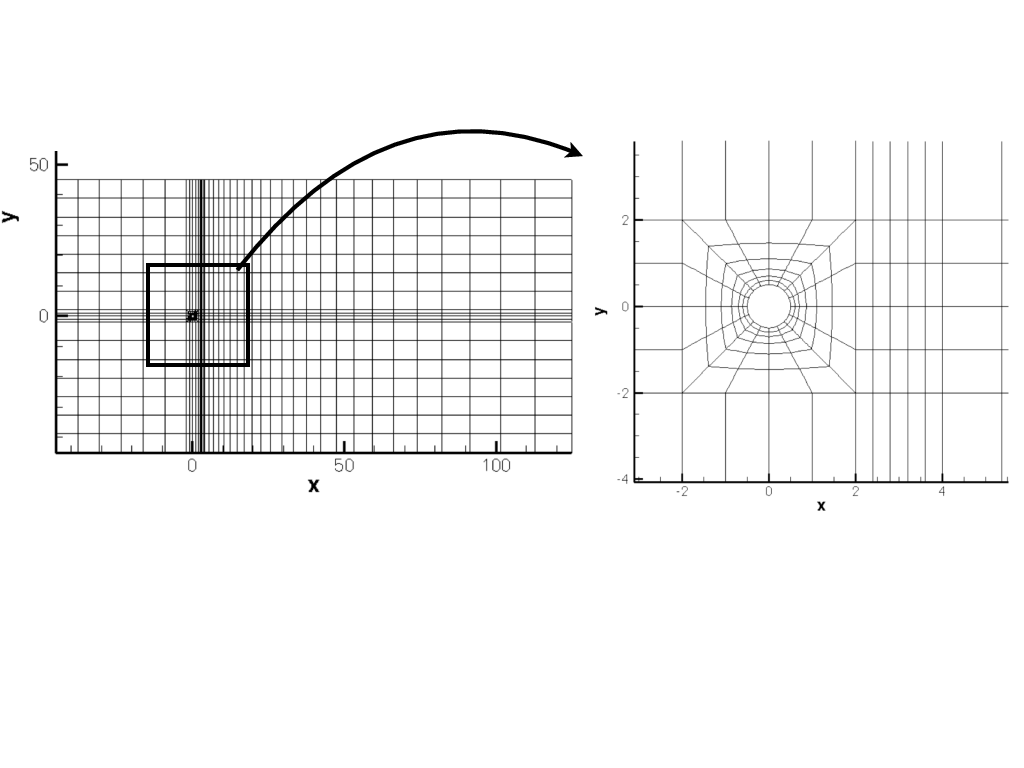
As a final example we will compute the direct and adjoint modes of a two-dimensional flow past a cylinder. We will investigate a case in the subcritical regime (Re = 42), below the onset of the Bernard-von Kärmän vortex shedding that is observed when the Reynolds number is above the critical value Rec ≃ 47; this analysis is important because it allows us to study the sensitivity of the flow, much like that reported by Giannetti and Luchini ( J. Fluid Mech., 2007; 592:177-194). Due to the more complex nature of the flow and the more demanding computational time that is required, only some basic information will be presented in this section, mainly to show the potential of the code for stability analysis.
The files for this section can be found in the Cylinder directory.
Geometry
Cylinder.geo - Gmsh file that contains the geometry of the problem
Cylinder.msh - Gmsh generated mesh data listing mesh vertices and elements.Base
Cylinder-Base.xml - Nektar++ session file, generated with the $NEK/MeshConvert
utility, for computing the base flow.
Cylinder-Base.fld - Nektar++ field file that contains the base flow, generated using Cylinder-Base.xml.Stability/Direct
Cylinder_Direct.xml - Nektar++ session file, generated with $NEK/MeshConvert.
Cylinder_Direct.bse - Nektar++ field file that contains the base flow.
Cylinder_Direct.rst - Nektar++ field file that contains the initial conditions.The mesh is shown in figure 9 along with a detailed view around the cylinder. This mesh is made up of 782 quadrilateral elements.
Note: It is important to note that stability and transient growth calculations in particular, have a strong dependence on the domain size as reported by Cantwell and Barkley (Physical Review E, 2010; 82); moreover, poor mesh design can lead to incorrect results. Specifically, the mesh must be sufficiently refined around the cylinder in order to capture the separation of the flow and abrupt variations in the size of the elements should be avoided.